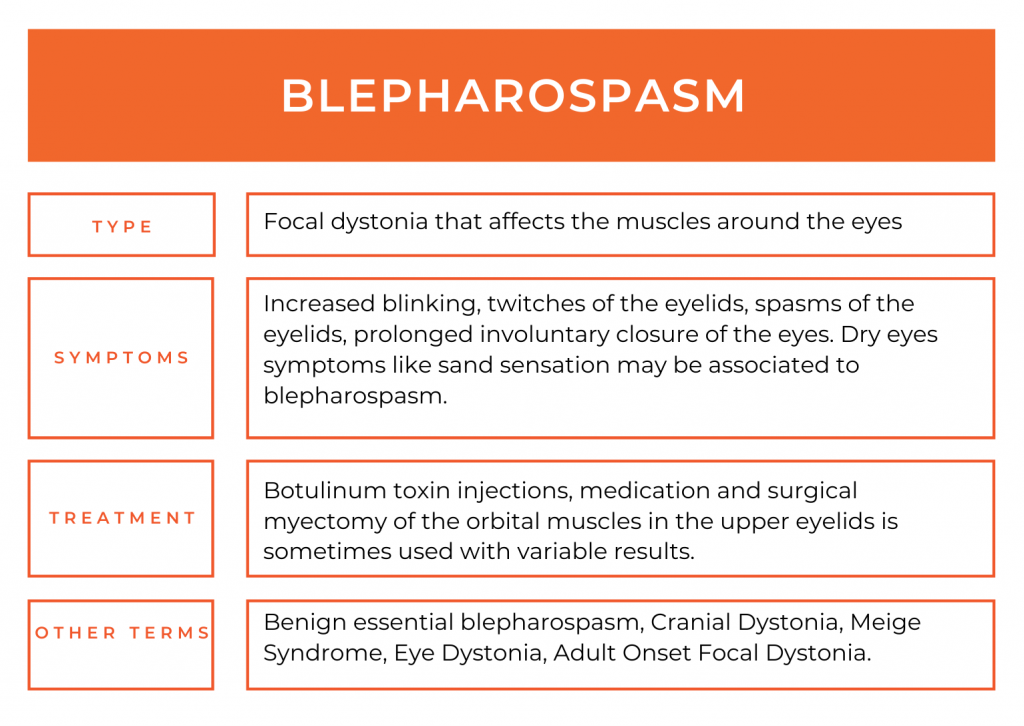Symptoms:
Blepharospasm typically affects both eyes and usually progress gradually. At onset, eye irritation symptoms may occur along with excessive blinking. In the early stages, symptoms may occur only under certain circumstances. Precipitating stressors include bright lights, emotional tension or fatigue. As the condition progresses, symptoms become more frequent and progress over time to forceful and frequent contractures of the eyelids. In some cases, eyelids remain forcefully closed causing functional blindness.
Causes:
The exact cause of idiopathic blepharospasm is unknown. Some evidence using functional neuroimaging suggests dysfunction within the basal ganglia.
Blepharospasm may also occur as a symptom of the following conditions:
- Tardive dyskinesia: secondary to antipsychotic medications
- Neurodegenerative diseases. People with Parkinson’s disease might develop blepharospasm over the disease course. However, at disease onset blinking is often reduced in Parkinson’s disease and blepharospasm is not a symptom of onset. Rarely people with Progressive Supranuclear Palsy might have apraxia of eyelid opening, a condition similar to blepharospasm causing inability to open the eyes.
- Functional neurological disorder
Diagnosis:
Diagnosis of blepharospasm is made clinically based on patient’s history and neurological examination. Neuroimaging is typically normal.
Differential diagnosis:
- Ocular myokymia. Twitches of the eyelid which often may occur due to fatigue or stress.
- Facial tics
- Hemifacial spasm (contraction of the one side of the face
- Ocular disorders determining excessive blinking (e.g. dry eyes, blepharitis)
Treatment:
Botulinum Toxin – Periodic botulinum toxin injection into the eyelid muscles is one of the most effective treatments of blepharospasm and is considered a first line therapy.
Medication – Clonazepam, Lorazepam, and Trihexyphenidyl might be somewhat helpful in a few patients with blepharospasm. However, their side effects (sleepiness, drowsiness, memory propblems) must be considered alongside their benefits.
Surgery – This is reserved for patients who poorly respond to botulinum toxin injections. Surgical myectomy of the orbital muscles in the upper eyelids is sometimes used with variable results. Deep brain stimulation is not considered for isolated blepharospasm, whereas severe cases of Meige Syndrome, not responsing to botulinum toxin, have been sometimes treated with DBS – Deep Brain Stimulation.

